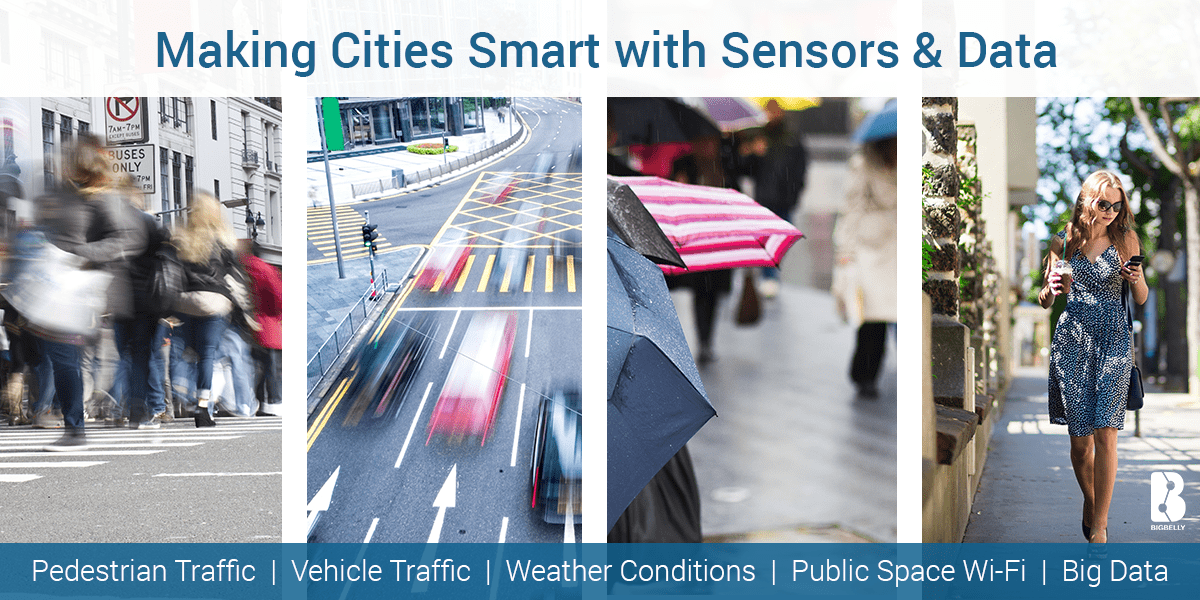Further defining and developing their Smart Cities, municipalities around the globe are testing ways to equip existing street ‘furniture’ – parking meters, lamp posts, trash bins, and more – with ‘smart city’ applications, devices, and sensors for more intelligent ways to manage and maintain city services and infrastructures.

Who?
- Cities, Towns, Business Improvement Districts; Councils, City Leaders, Government
- Technology Solution and Service Providers
- Device and Sensor Manufacturers
- Communication and Network Providers
What?
Pilot programs are as far ranging as the cities across the globe assessing the viability of new technologies and approaches to solve traditional processes or to prepare for resiliency.
Success is measured in just about as many different ways. At a minimum, municipalities are turning to technologic advances that drive down costs and improve day-to-day living. Innovation is providing ways to complete projects successfully, especially those once deemed impossible due to:
- physical restraints (large cumbersome devices),
- the creation of eyesores (awkward attachment of devices or sensors to existing structures),
- lack of funding and tight budgets,
- limitations in available technology innovations,
- lack of interest or understanding within private sector service or technology providers that remain unaware of the future benefits associated with Smart City and IoT initiatives
While many in-house development teams and commercial software companies are building applications around Smart City and IoT projects, development created outside a short-term silo in a collaborative fashion has the greatest return. Even greater success will come from companies addressing core city services that can adapt their solutions to provide new platforms, approaches, and solutions that address the broad spectrum of city needs and add value to constituents.
Think about these applications and Smart City technology that tie directly to existing city services and required infrastructure: Adding Wi-Fi to trash and recycling bins; Attaching sensors to existing structures, such as light posts, to monitor air quality and noise pollution; Affixing RFID tags to mobile fleets for better asset management; Placing cameras for in-the-moment sights and sounds needed to improve safety and security; Using barcodes to monitor mail delivery.
Such advances collect data and provide real-time information about the location, device, or structure. Sensors expand data collection by reporting other valuable information associated with the equipment or “thing.” For example local, state, and federal governmental agencies are looking for ways to efficiently collect real-time data for pollution measurement and weather studies.
Data provides the private sector with a unique view into the city nervous system – vehicle and alterative transit traffic, visitor and resident footfall and movement, community and business impact – to devise ways to address urban development with an eye toward walkability and traffic flow and to create new products that are environmental sound and sustainable serving a community need.
Let’s take this data continuum one step further and assume that every product used, consumed, purchased, transported, bought, or traded could be tracked using say RFID tags. Brands could easily leverage that data for just-in-time manufacturing and inventory management. Towns could see if materials are being inproperly disposed of in public space waste bins. Law enforcement could more readily locate stolen or lost property.
Why?
Core to these pilot programs turned reality is data collection, trends with historical analysis, and connectivity. Open data used by all stakeholders will fortify citizen engagement, fuel technology innovation, and further drive city commitment to a future that will evolve and embrace new ways of doing old things AND…
- Enhance everyday life by improved quality of life and value added services
- Streamline time- and labor-intensive, often highly inefficient processes
- Build economies of scale by deploying systems that address or solve multiple issues (litter collection and municipal Wi-Fi)
When?
Pilots are happening now, running around the clock. Successes are being cataloged, shared, and improved upon. Products and services are being created. Cities today are planning and evolving for the quick-arriving future of tomorrow.
Where?
The future looks bright for citizens, visitors, and businesses from sprawling urban communities to quaint towns around the globe. There’s a place for technology…we’re only now testing the boundaries, which frankly seem limitless. Each community can share and learn from its neighbor. Some cities recognized as Smart City champions include:
- Barcelona for its breadth of involvement in the Smart City concept.
- London for its sustainability innovations, efforts to reduce congestion via tax surcharges, and its efficient and highly effective transit system.
- Masdar City in the United Arab Emirates because of its overarching focus on the environment and sustainability.
- New York City for its widespread public space Wi-Fi testing to make connectivity easy and accessible.
- Paris for its model bike sharing program and overall focus on green living.
- Singapore because of its model smart traffic system.
- Tokyo for its focus on promoting smart mobility solutions and creation of an eco-burb containing eco-friendly homes that integrate and interconnect alternative power and energy efficient appliances.
- Toronto for its transition to a low-carbon economy.
- Vienna with its bold smart city targets and success measurements.
There are so many more cities innovating and leveraging technology applications to develop into a sustainable Smart City – from Amsterdam, Berlin, Brisbane, Copenhagen, Helsinki, Hong Kong, Melbourne, Seattle, São Paulo, Stockholm, Vancouver and many others – in very diverse ways.



